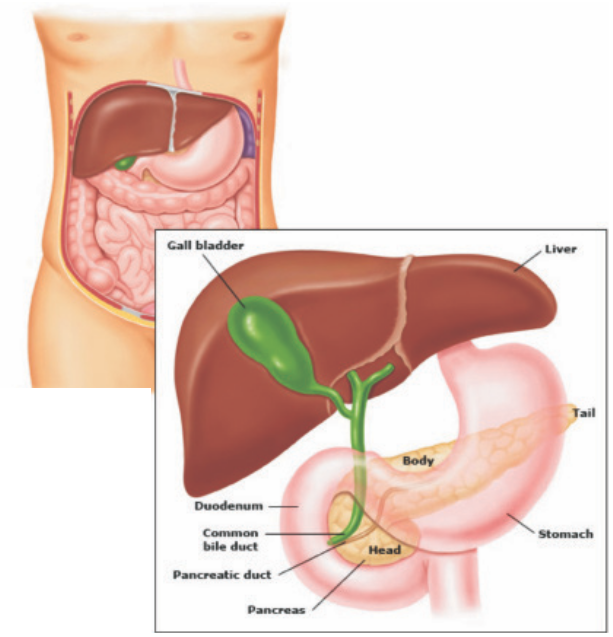
The pancreas is a gland which has two main functions: to produce enzymes to digest food and to produce hormones insulin and glucagon to help maintain peoples blood sugar control.
It lies in the upper aspect of the abdomen in front of the spine and behind the stomach. It is approximately 20cm long and has four sections: The pancreatic – head, neck, body and tail.
The head of the pancreas lies surrounded by the duodenum, which is the first part of your small bowel. The body of the pancreas lies behind your stomach and the tail of the pancreas lies next to your spleen.
There is a main pancreatic duct that runs through the entire length of the pancreas. This duct empties the digestive enzymes into the small intestine from a small opening called the ampulla of Vater.
There are also two bile ducts that come out of the liver and join to become the common bile duct. The end of the common bile duct meets the pancreatic duct at the ampulla of Vater and empties the bile into the duodenum.
If the pancreas does not function properly patients can become dependent reliant on pancreatic enzyme replacement therapy and/or become diabetic.
Common conditions that can affect the pancreas
- Inflammation of the pancreas (pancreatitis)
- Endocrine tumours of the pancreas e.g. insulinomas, VIPomas
- Benign (non-cancerous) tumours, sometimes described as cystic lesions, these may become malignant over many years
- Malignant (cancerous) tumours of the pancreas, or bile duct that runs through the pancreas
Signs and symptoms
There are many signs and symptoms that people may experience when they have a problem with there pancreas. However, such vague symptoms can make diagnosis difficult unless there is a sudden onset of symptoms.
People may experience:
Pain
Often described in the upper part of the abdomen radiating into the back.
Weight loss
Reduced appetite, loose greasy pale stools.